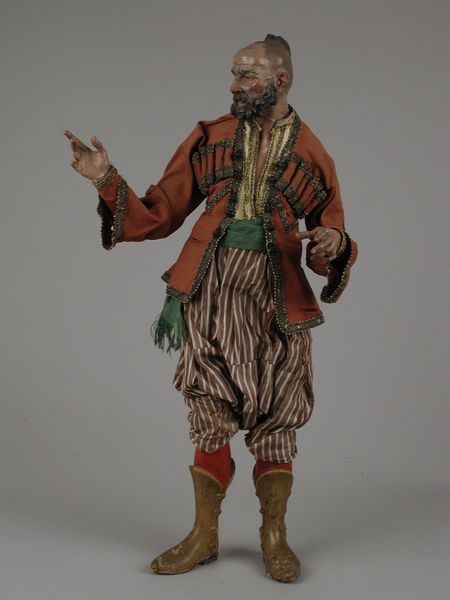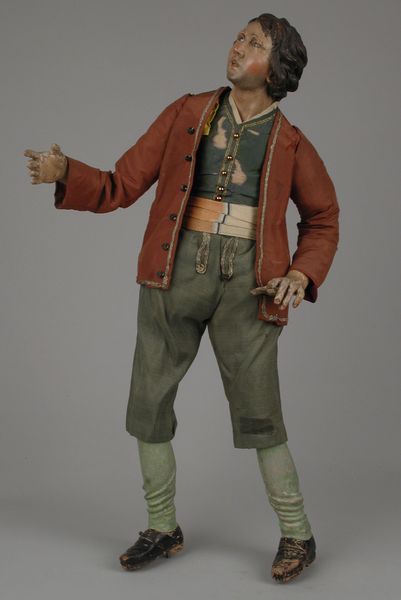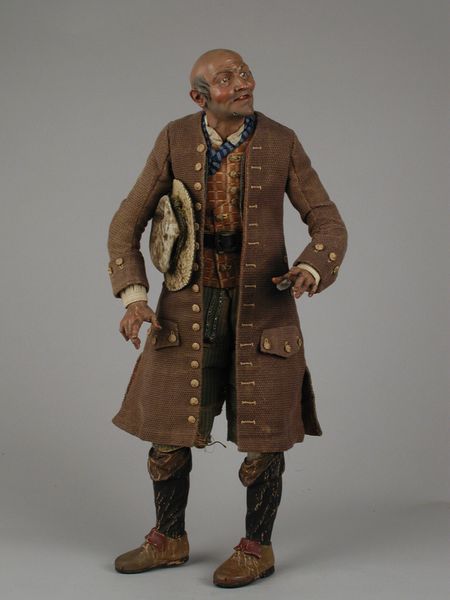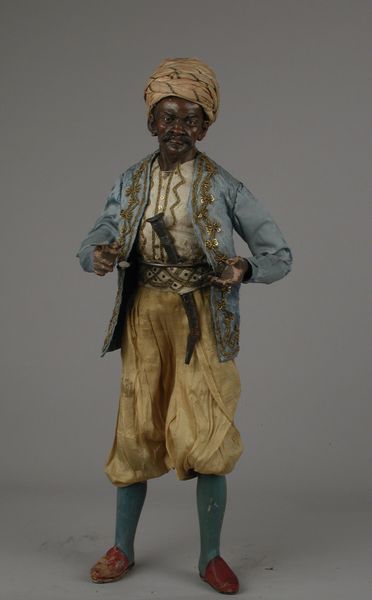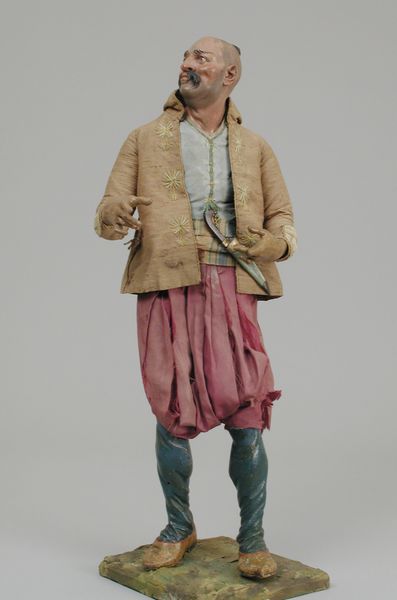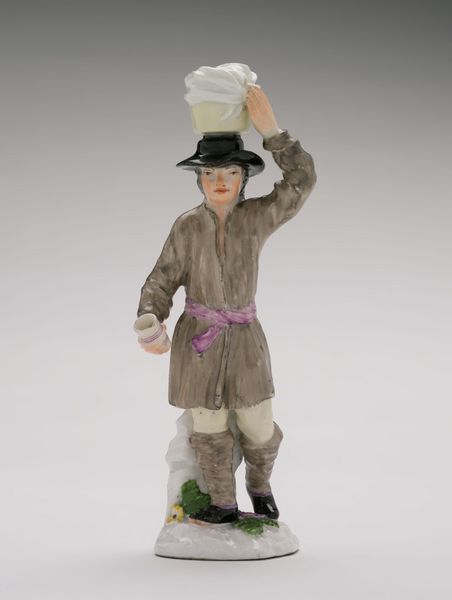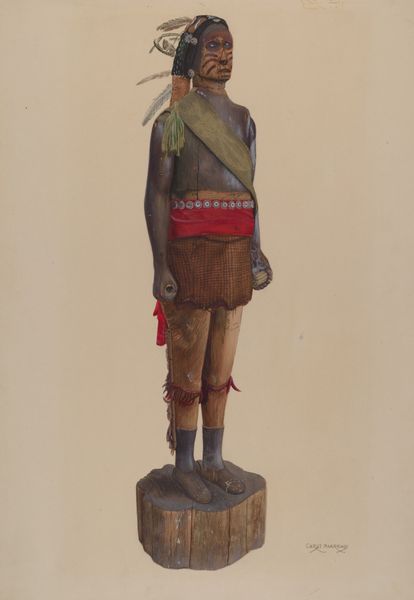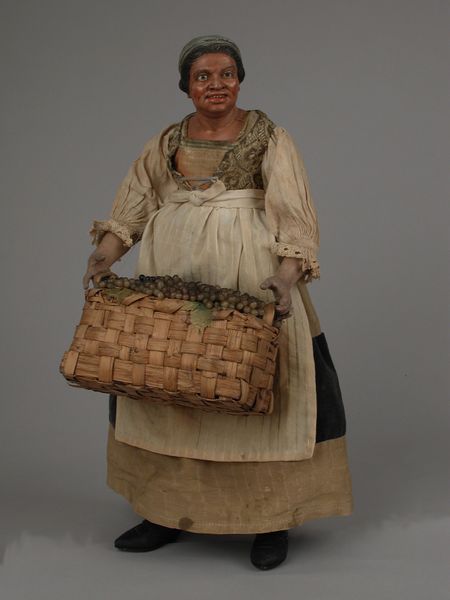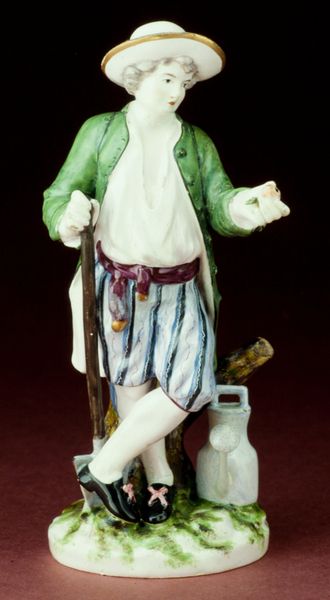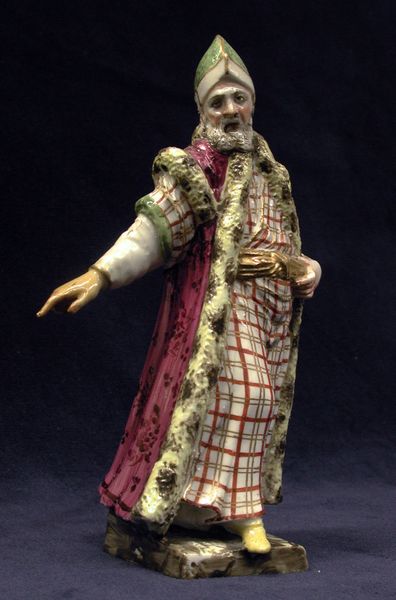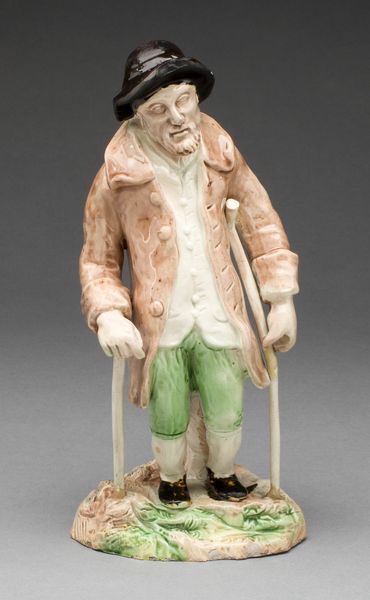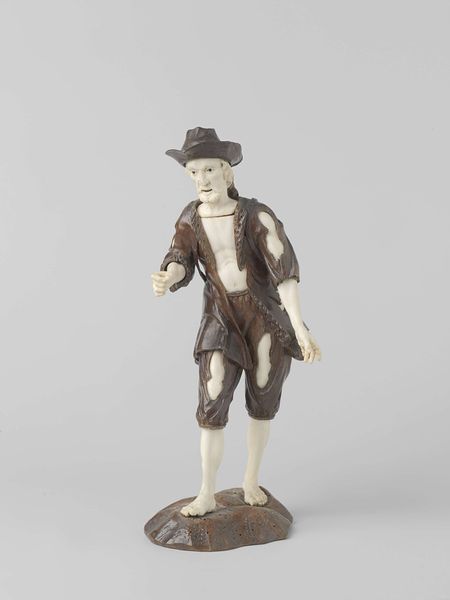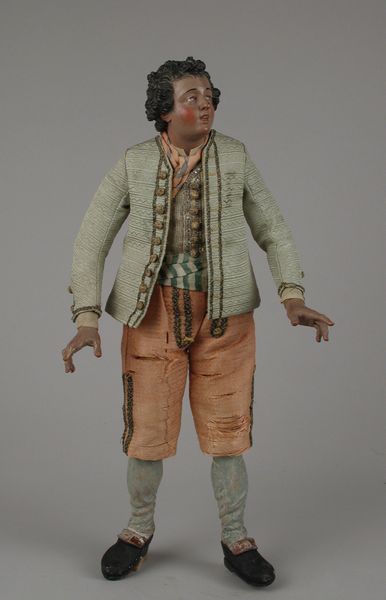
sculpture
#
table
#
product design sketch
#
character design for game
#
3d character model
#
sculpture
#
character design
#
child character design
#
character illustration
#
men
#
character design for animation
#
child animation
#
decorative-art
#
cartoon carciture
#
3d character modeling
Dimensions: H. 15 1/2 in. (39.4 cm.)
Copyright: Public Domain
Curator: Here we have a Neapolitan presepio figure dating from the late 18th century, between 1750 and 1799, made by Lorenzo Mosca. It is titled "Shepherd" and is now located at the Metropolitan Museum of Art. Editor: He has such a calm presence about him, despite appearing to be burdened by the heavy basket and the realities of perhaps rural poverty suggested by his clothing and the absence of shoes. His expression is kindly. Curator: Yes, and what do you make of this tradition? Presepio figures such as this one, made for elaborate Nativity scenes, became immensely popular at that time, reflecting social hierarchies. This character clearly holds cultural significance. The fruit, the simple clothes, the race. Editor: Precisely! The choice to represent a Black figure carrying produce certainly needs unpacking. It raises questions about colonial economies, exploitation, and perhaps even naive representations of servitude normalized by a privileged white audience for their elaborate seasonal display. I see layers of potential colonial commentary lurking here. Who gets depicted, how, and for whom. Curator: But at the same time, isn't there also an element of elevating everyday life through art? By depicting this common individual figure in an elevated scene – that of the Nativity – doesn’t this shepherd bring a deeper humanity to the story, democratizing the divine birth narrative? I see the archetypal humble man as the visual focus. Editor: I see the idealization, certainly, the flattening into a generalized figure of the "common man" you say. But that kind of generalization often masks or erases the individual stories, real people’s lived struggles that are rooted in histories of inequality. Curator: Indeed. And he does carry that weight in ways both obvious and incredibly subtle. Editor: It is amazing how much cultural and personal meanings these images absorb through time, as they meet our eyes. I hadn't expected it. Curator: Absolutely. It’s why these pieces remain endlessly compelling, regardless of their scale.
Comments
No comments
Be the first to comment and join the conversation on the ultimate creative platform.
